In today’s digital world, cybercrime is changing fast. It’s a big threat to both people and businesses. We need to know about the different types of cybercrime that can harm us online. This includes malware, phishing scams, identity theft, and data breaches.
What are the most common types of cybercrime? How can we protect ourselves from these threats? Let’s explore the world of digital threats together. We’ll find out how to stay ahead of cybercriminals.
Key Takeaways
- Cybercrime includes many digital threats like malware, phishing, identity theft, and data breaches.
- Knowing what cybercriminals do and why is key to fighting them.
- Cybercrime can cause a lot of harm, affecting both money and reputation.
- Good cybersecurity, like strong passwords and staying alert, helps protect us.
- Working together is crucial in the battle against cybercrime.
The Evolving Landscape of Cybercrime
The world of cybercrime is always changing. Cybercriminals keep finding new ways to take advantage of weaknesses. It’s important to know why they do this to fight against cybercrime.
Cybercriminals’ Motivations and Tactics
Cybercriminals have many reasons for their actions. Some want money, others have political goals, or personal scores to settle. They use different cybercriminal tactics like malware and phishing to get what they want.
The Impact of Cybercrime on Individuals and Businesses
Cybercrime can hurt a lot of people and companies. It can cause financial losses, data breaches, and harm a company’s reputation. As cybercrime grows, we need better security and to stay alert.
“The cybercrime landscape is constantly evolving, and staying ahead of these threats requires a comprehensive understanding of the motivations and tactics employed by cybercriminals.”
Malware Attacks: Viruses, Worms, and Trojans
Cybercriminals keep finding new ways to harm us online. Malware, like viruses, worms, and Trojans, is a big problem. These programs can steal our data and mess with important systems. Knowing how they work helps us fight back.
Viruses: Replicating and Infecting
Viruses spread on their own, through emails, websites, and USBs. They can copy themselves, steal data, and even control our computers. Keeping our software updated is key to stopping viruses.
Worms: Spreading Autonomously
Worms spread without our help. They find weak spots in networks and infect many computers at once. They can slow down our systems and even crash them. We need to watch our networks closely to stop worms.
Trojans: Disguising Malicious Intent
Trojans pretend to be safe software. They trick us into installing them. Then, they let hackers into our computers. It’s important to be careful when downloading things to avoid Trojans.
| Malware Type | Characteristics | Primary Goals |
|---|---|---|
| Viruses | Self-replicating programs that spread through various means | Steal data, corrupt files, and take control of the host computer |
| Worms | Propagate autonomously through network vulnerabilities | Consume system resources, disrupt networks, and cause system crashes |
| Trojans | Masquerade as legitimate software to gain unauthorized access | Steal data, monitor user activities, and gain control of the infected device |
Fighting malware needs a strong plan. This includes keeping software up-to-date, using good security, and teaching people about online dangers. By understanding these threats, we can better protect ourselves and our systems.
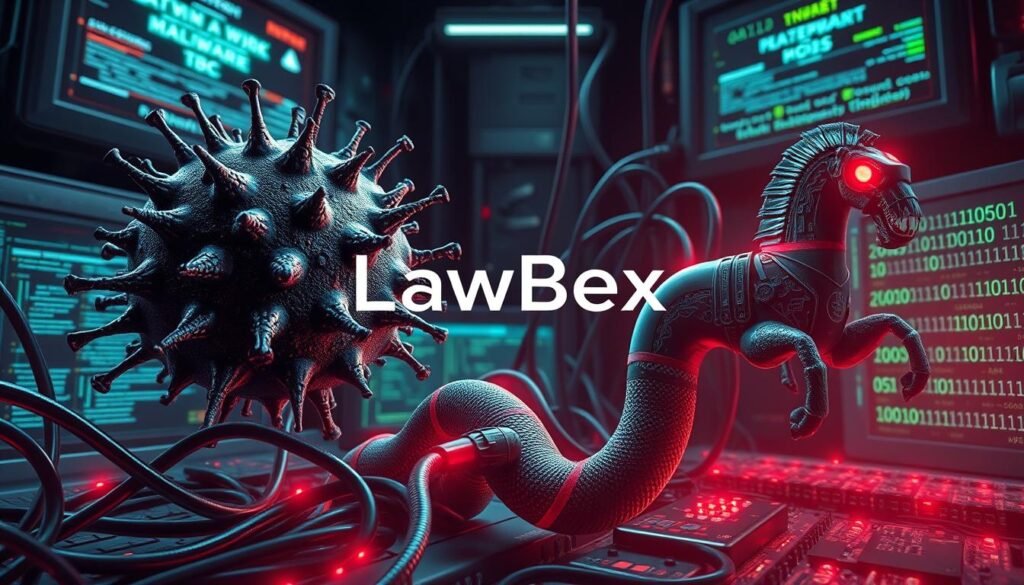
“Cybercriminals are constantly evolving their tactics, and staying one step ahead of them requires vigilance and continuous improvement in our security practices.”
Phishing Scams: Deceptive Lures for Personal Information
In today’s digital world, phishing scams are a big threat. They trick people into giving out personal info like passwords or bank details.
Recognizing and Avoiding Phishing Attempts
To avoid phishing attacks, you need to know how to spot them. Scammers often send fake emails that look like they’re from real places, like banks or the government.
- These emails try to scare you into acting fast, like checking your account or clicking on a link.
- They might have spelling mistakes or bad grammar, showing they’re not real.
- Also, the link might not look right or the website might look different from the real one.
Being careful and checking if emails are real can help a lot. Using strong passwords, two-factor authentication, and keeping your software up to date are also good ways to protect yourself.
“Phishing attacks are a constant threat, but by staying informed and practicing good cybersecurity habits, we can minimize the risks and protect our personal and financial information.”
| Phishing Scam Tactics | Phishing Prevention Strategies |
|---|---|
|
|
By staying alert and using good phishing prevention methods, we can keep our info safe. Stay informed, stay secure, and outsmart cybercriminals.
Identity Theft: Stealing Personal Identities for Financial Gain
Identity theft is a big problem in today’s digital world. Cybercriminals use new ways to steal personal info for money. They take things like names, Social Security numbers, or bank details without permission.
Protecting Your Identity and Minimizing Risks
To fight identity theft, you need to act early. Here are some ways to keep your info safe:
- Be careful when sharing personal data online or in public. Don’t give out sensitive info unless you have to.
- Keep an eye on your financial accounts and credit reports. Look for any strange activity or unauthorized transactions.
- Use strong, different passwords for all your accounts. Also, turn on two-factor authentication when you can.
- Shred papers with personal identity theft or financial identity theft info before throwing them away.
- Get a good identity protection service. It can help spot and stop identity theft prevention.
By following these steps and staying up-to-date on identity theft tricks, you can lower your risk. This helps keep your money and personal info safe.
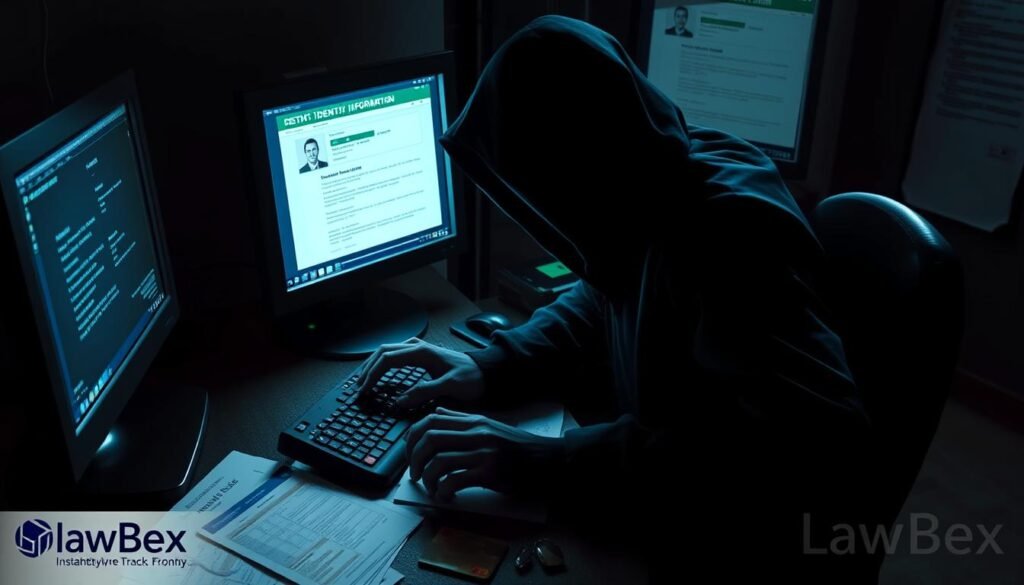
“Identity theft is a serious crime that can have a profound impact on an individual’s financial and personal well-being. Protecting your identity should be a top priority in the digital age.”
Ransomware: The Extortion of Data for Ransom
Ransomware is a big problem in cybercrime. It locks up your data and demands money to unlock it. These attacks are getting smarter, making it harder to protect ourselves.
The main goal of ransomware is to make money. It encrypts your data, forcing you to choose between paying the ransom or losing your files. This can cause huge financial problems and disrupt businesses.
To fight ransomware, we need to use many different security steps. This includes backing up your data, updating your software, and teaching your team about these threats. It’s also important to use firewalls, antivirus, and train your employees.
- Stay alert and teach your team about new ransomware tricks.
- Make sure to back up your data in a safe place to lessen the damage from an attack.
- Keep your software and systems updated to fix security holes.
- Use strong security measures to control who can access your data and systems.
By being proactive, we can protect our data and businesses. We can outsmart the cybercriminals who want to harm us online.
“Ransomware attacks can have devastating consequences, leaving individuals and organizations vulnerable to substantial financial losses and disruptions to their operations.”
DDoS Attacks: Overwhelming Systems with Traffic
DDoS attacks, or Distributed Denial-of-Service attacks, are a big problem in cybercrime. They flood systems with traffic, making them hard to use. Cybercriminals use a network of hacked devices to launch these attacks, causing big problems.
The Consequences of DDoS Attacks
DDoS attacks can really hurt. When a system gets too much traffic, it can’t handle real requests. This shuts down important services and apps. It hurts people, businesses, and even critical systems, leading to lost time, damage to reputation, and money lost.
The DDoS consequences can show up in many ways, like:
- Disruption of online services and e-commerce platforms, preventing customers from accessing essential resources
- Interruption of communication channels, hindering the ability to conduct business effectively
- Damage to an organization’s reputation and credibility, undermining trust with clients and partners
- Financial losses due to downtime, lost productivity, and the costs associated with mitigating the attack
In some cases, DDoS attacks might hide other bad activities, like stealing data or getting into systems. This makes things even worse for people and businesses.
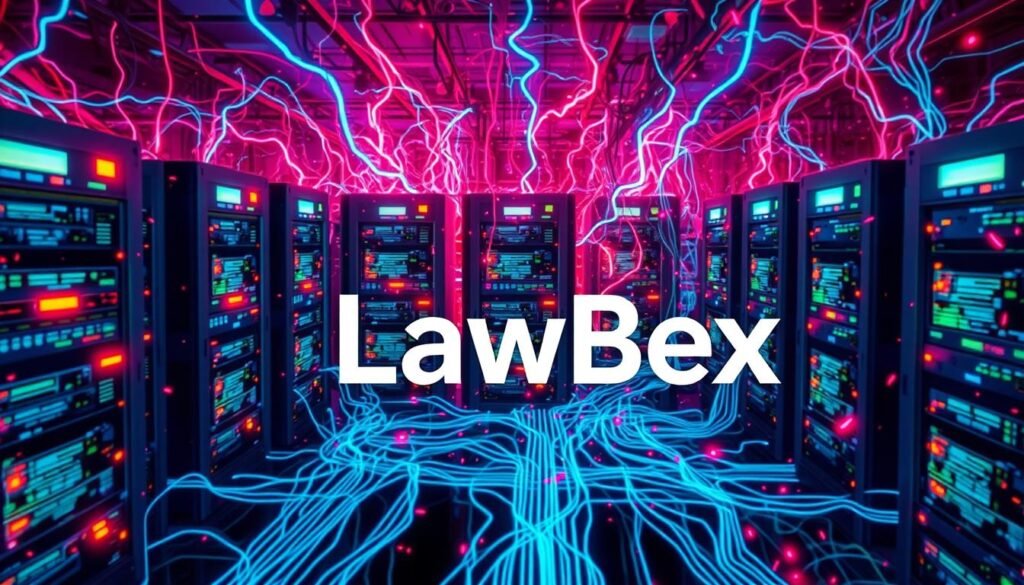
“DDoS attacks are a growing threat, and their impact can be devastating. Businesses must be proactive in safeguarding their systems and networks to mitigate the risks.”
Fighting DDoS attacks needs a strong plan. This includes good network security, quick response plans, and working with cybersecurity experts. By being careful and taking steps ahead of time, we can protect ourselves and keep important services running.
Cyberstalking: Harassment in the Digital Realm
In today’s world, cyberstalking is a big problem. It happens when people use the internet to scare, threaten, or follow others. This can include sending unwanted messages, watching someone’s online activities, or sharing their personal info without asking.
Cyberstalkers use many ways to bother their victims. They might make fake social media profiles, hack into accounts, or use spyware to track someone. Being stalked online can make a person feel scared, anxious, and always on guard.
To fight cyberstalking, it’s important to know the signs and protect yourself. Be careful about what you share online, check your digital presence often, and tell the police if you see anything strange.
Recognizing the Signs of Cyberstalking
- Getting too many unwanted messages, emails, or calls
- Finding out someone has accessed your accounts or devices without permission
- Discovering that someone has shared your private info without your okay
- Seeing that someone is always following or watching you online
Protecting Yourself from Cyberstalking
- Don’t share too much personal stuff on social media or online
- Use strong, different passwords for all your online accounts
- Turn on two-factor authentication when you can
- Keep an eye on your credit reports for any signs of identity theft
- If you think you’re being stalked online, get help from the police or cybersecurity experts
By knowing about cyberstalking and taking steps to protect yourself, you can keep your online life safe. Fighting cyberstalking is key in the fight against cybercrime and digital harassment.
| Cyberstalking Tactics | Potential Impacts |
|---|---|
| Unwanted messages, emails, or calls | Emotional distress, anxiety, and fear |
| Unauthorized access to personal accounts | Loss of privacy and security |
| Disclosure of personal information | Damage to reputation and identity theft |
| Online monitoring and surveillance | Feeling of constant threat and violation of personal boundaries |
By tackling the problem of cyberstalking and online stalking, we can help people stay safe online. This way, they can enjoy the internet without fear of being stalked.
“Cyberstalking is a form of harassment that can have a devastating impact on victims, leaving them feeling powerless and unsafe in their own digital lives.”
Types of Cybercrime: Hacking and Unauthorized Access
At the heart of many cybercrimes is hacking and unauthorized access. Cybercriminals use digital vulnerabilities to get into systems or networks. They do this with bad intentions. These hacking methods include malware, social engineering, and brute-force attacks.
Hacking and unauthorized access are key parts of cybercrime. But, ethical hacking and penetration testing play a big role in fighting these threats. Cybersecurity experts use these methods to find and fix weaknesses. This makes systems and networks safer for everyone.
Ethical Hacking and Penetration Testing
Ethical hackers, or penetration testers, act like real hackers to test security. They use the same tactics as bad hackers to find weak spots. This helps organizations get better at stopping cybercrime hacking attempts.
- Ethical hackers use their skills to find and fix vulnerabilities. They aim to make security better, not worse.
- Penetration testing is a controlled way to check a system’s or network’s security. It helps organizations understand their risks.
- The knowledge from ethical hacking and penetration testing is key to making strong cybersecurity plans. It helps fight unauthorized access and other cybercrime threats.
By using these security steps, organizations can protect themselves from cybercrime hacking. This makes the digital world safer for everyone.
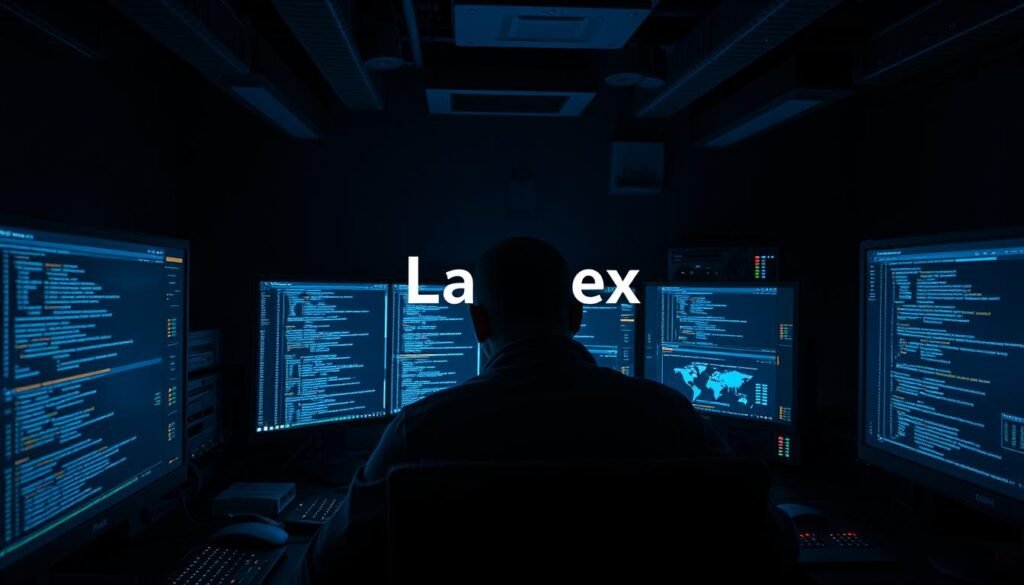
“Ethical hacking is not just about breaking into systems – it’s about identifying vulnerabilities and working with organizations to improve their overall security posture.”
Data Breaches: Exposing Sensitive Information
In today’s digital world, data breaches are a big worry. Cybercriminals look for ways to get to our sensitive info. These breaches can lead to big losses and even expose our identities. It’s key to know the risks and how to protect our data.
Mitigating the Risks of Data Breaches
Stopping data breaches needs a strong plan. Companies should focus on good security, like strong passwords and updated software. They should also check their systems often and teach employees about keeping data safe.
For us, being careful with our personal info is important. We should check our credit reports and use services that protect our identity. If a breach happens, acting fast can help lessen the harm.
| Common Causes of Data Breaches | Strategies for Data Breach Mitigation |
|---|---|
|
|
Knowing why data breaches happen and how to stop them is crucial. We can make the internet safer for everyone. For more on big data breaches, check out the detailed info online.
“Data breaches can have devastating consequences, but with the right strategies in place, we can significantly reduce the risks and protect the integrity of sensitive information.”
Online Fraud: Deception for Financial Gain
In today’s digital world, online fraud is a big worry for everyone. These cybercrime tricks aim to get money by lying. They include scams, fake products, and more.
Online crooks often use phishing to trick people into sharing personal info. They also sell fake goods, which can cost you money and be dangerous.
To fight online scams, we must be careful and take action. Here are some important steps:
- Check if online stores and services are real before buying or using their services.
- Look out for fake emails, messages, and websites. They often have mistakes or ask for personal info.
- Keep an eye on your money by checking your bank and credit card statements often.
- Tell the police if you think you’ve been scammed online.
By being alert and taking steps to protect ourselves, we can reduce the harm of online fraud. This helps keep our money safe in the digital world.
| Type of Online Fraud | Description | Examples |
|---|---|---|
| Phishing | Trying to get personal info like passwords or bank details by tricking people. | Email scams, fake websites, and social media tricks |
| Counterfeit Goods | Selling fake or low-quality products at low prices to unsuspecting buyers. | Fake designer items, electronics, and medicines |
| Business Email Compromise | Using fake emails to trick businesses into sending money or doing other financial actions. | Phony emails asking for money transfers or payments |
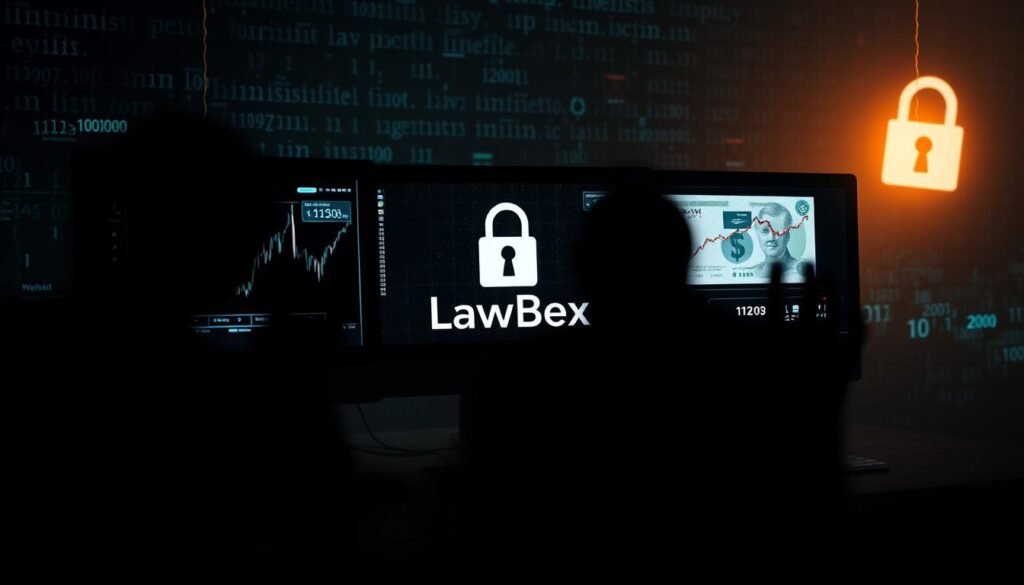
“Online fraud is a constant threat that keeps changing. We must stay alert and use strong security to protect ourselves from these scams.”
Combating Cybercrime: Preventive Measures and Responses
In today’s world, cybercrime is a big threat. We need a strong plan to fight it. Cybersecurity experts are key in keeping our digital world safe.
The Role of Cybersecurity Professionals
Cybersecurity experts are our first line of defense. They use strong security measures to protect us from cyber threats. These threats include malware, phishing, identity theft, and data breaches.
These experts use many strategies to fight cybercrime. They set up security tools like firewalls and encryption. They also keep learning to stay one step ahead of cybercriminals.
But their job goes beyond just tech. They teach people how to prevent and respond to cybercrime. This helps everyone stay safe online.
| Cybersecurity Measures | Cybercrime Prevention Strategies | Cybercrime Response Tactics |
|---|---|---|
| Firewalls, Intrusion Detection Systems, Encryption | User Education, Secure Practices, Regular Backups | Incident Response Plans, Threat Monitoring, Forensic Analysis |
Cybersecurity experts, law enforcement, and governments work together to fight cybercrime. Their teamwork helps make our digital world safer for everyone.
“Cybersecurity professionals are the unsung heroes, constantly working to protect our digital lives from the dangers that lurk in the shadows of the internet.”
Tarn: A brewery convicted of tax fraud in the center of Albi
TARN: A BREWERY CONVICTED OF TAX FRAUD IN THE CENTER OF ALBI
Conclusion
We’ve learned a lot about cybercrime in our journey. We see how digital threats are changing and growing. Malware, phishing, identity theft, and ransomware are just a few examples. But, we can fight back with strong cybersecurity.
It’s important to keep learning about cybercrime and how to fight it. We need to work together with cybersecurity experts. This way, we can protect our digital world and keep our information safe.
The fight against cybercrime never ends. But, if we stay alert and use cybersecurity advice, we can make a difference. We can fight the cybercrime conclusion, improve our cybersecurity overview, and defend against new digital threats summary.
